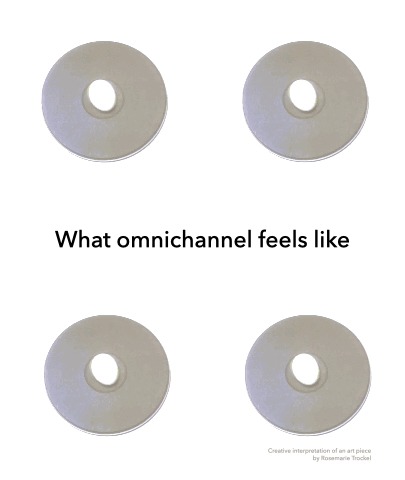Why is it so tricky to pull off connected brand communications across multiple channels? Why is aligning communication still so difficult for organizations?
Is the promise of what marketing calls omni-channel actually a curse of too-many-channels?

We wish it could be as simple as doing something just once and then distributing it across channels. Remember those times a decade or so ago? Create a campaign, break it down into multiple marketing assets, distribute it across all your channels. Easy.
Although having an expansive brand footprint is every leader’s aspiration, the reality is that it takes constant alignment and agility.
Why agility? Because staying relevant needs continuous listening and creative interpretation of the things that are important to people buying into the brand.
That sounds impossible. But it isn’t. The key is to create a strategic practice of focus and action within the organization, as an organization.
That also means that some things begin as experiments and may not be perfect from the start. One of the things technology has taught every other industry is to go easy on the details in favor of the value. Small and solo brands find themselves at an advantage here. Use it!
When speaking of omni-channel, we need to realize one thing:
Customers don’t care about your brand. They care about value and how the brand contributes to their own self-image, life or the planet, more recently.
Knowing this, there are two things customers need from brand communications:
- On brand channels they expect excitement, personalization and transparency of product. They want to dive into the many facets of the brand world, also beyond the product.
- But in all the digital and real life places they engage and connect with other individuals, customers appreciate validation, gentle, unobtrusive guidance or even creative freedom.
What might enabling customers through your communications, i.e. on social media, look like for your brand? What might co-creation with customers look like? How might you become more comfortable with reliquishing control in that case? Who would be needed in the organization to pull it off that you haven’t included yet?
🤔 Good questions to a for many still great challenge. If it were easy, everyone would be mastering it.
Many experts believe the silo-ed organization is omnichannel’s greatest hurdle. But throughout the years and many omnichannel communications briefs, I’ve come to realize that it’s almost more about the act of focusing on a very specific value proposition, whereas organizations big and small are still trying to do it all, all at once.
For small teams and independent experts, cross-connected storytelling and communications aren’t even a topic. But why not? The greatest advantage of being small is that you are not bogged down by process, infrastructure or aligning across departments. Everyone has the same goal: To service and amaze customers in the best possible way.
Think of aligning your messages more strategically, or giving the different channels you use a clear value, i.e. Linkedin is for insights, Instagram is for community.
Whether you are part of a huge organization, or a solo artist, approach omni-channel through a strategist’s perspective:
Focus and value first. Leave your impulse to be everywhere at the door.